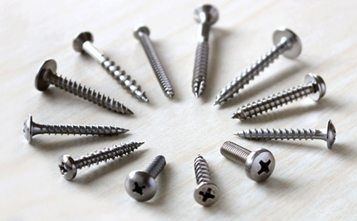Surface treatment is the process of forming a covering […]
Surface treatment is the process of forming a covering layer on the surface of the workpiece through a certain method. Its purpose is to give the product surface a beautiful and anti-corrosion effect. The surface treatment methods carried out are attributed to the following methods:
1. Electroplating: Immerse the electroplated parts in an aqueous solution containing the deposited metal compound, and pass current through the plating solution to precipitate and deposit the electroplated metal on the parts. Generally, electroplating includes zinc, copper, nickel, chromium, copper-nickel alloy, etc. Sometimes boiling black (blue), phosphating, etc. are also included.
2. Hot-dip galvanizing: It is completed by immersing the carbon steel parts in a molten zinc plating tank with a temperature of about 510℃. The result is that the iron-zinc alloy on the surface of the steel gradually turns into passivated zinc on the outer surface of the product. Hot-dip aluminum plating is a similar process.
3. Mechanical plating: impact the surface of the product through the particles of the coated metal, and cold weld the coating to the surface of the product.
Generally, the screws are mostly electroplated, but the hexagonal wood screws used in electric power, highways and other outdoor use hot dip galvanizing; the cost of electroplating is generally 1.2-1.6 yuan per kilogram, and hot-dip galvanizing is generally 2-2.5 yuan/ Kg, the cost is higher.

https://www.drywallscrew.net/product/drywall-screw/
The effect of electroplating:
The quality of electroplating is mainly measured by its corrosion resistance, followed by appearance. Corrosion resistance is to imitate the working environment of the product, set as the test condition, and perform corrosion test on it. The quality of electroplating products is controlled from the following aspects:
1. Appearance:
The surface of the product is not allowed to have partial non-plating, scorching, roughness, dullness, peeling, skinning, and obvious streaks, and no pinhole pitting, black plating slag, loose passivation film, cracking, shedding and serious Passivation marks.
2. Coating thickness:
The operating life of a fastener in a corrosive atmosphere is proportional to the thickness of its coating. The general recommended thickness of economical electroplating coating is 0.00015in~0.0005in (4~12um).
Hot-dip galvanizing: The standard average thickness is 54 um (nominal diameter ≤ 3/8 is 43 um), and the minimum thickness is 43 um (nominal diameter ≤ 3/8 is 37 um).
3. Coating distribution:
With different deposition methods, the way the plating layer gathers on the surface of the fastener is also different. During electroplating, the coating metal is not uniformly deposited on the outer peripheral edge, and a thicker coating is obtained at the corners. In the threaded part of the fastener, the thickest coating is located on the crest of the thread, gradually thinning along the side of the thread, and the thinnest deposit at the bottom of the thread, while hot-dip galvanizing is just the opposite. The thicker coating is deposited on the inner corner and At the bottom of the thread, the metal deposition tendency of the mechanical plating is the same as that of the hot dip plating, but it is smoother and the thickness is much more uniform across the surface.
4. Hydrogen embrittlement:
During the processing and treatment of fasteners, especially in the pickling and alkaline cleaning before plating and subsequent electroplating, the surface absorbs hydrogen atoms, and the deposited metal coating then traps hydrogen. When the fastener is tightened, the hydrogen is transferred to the most concentrated part, causing the pressure to increase beyond the strength of the base metal and produce tiny surface cracks. Hydrogen is particularly active and quickly penetrates into the newly formed fissures. This pressure-rupture-infiltration cycle continues until the fastener breaks. It usually occurs within a few hours after the first stress application.
In order to eliminate the threat of hydrogen embrittlement, fasteners should be heated and baked as quickly as possible after plating to make hydrogen seep out from the coating. Baking is usually carried out at 375-4000F (176-190°C) for 3-24 hours.
Since mechanical galvanizing is non-electrolyte, this actually eliminates the threat of hydrogen embrittlement.